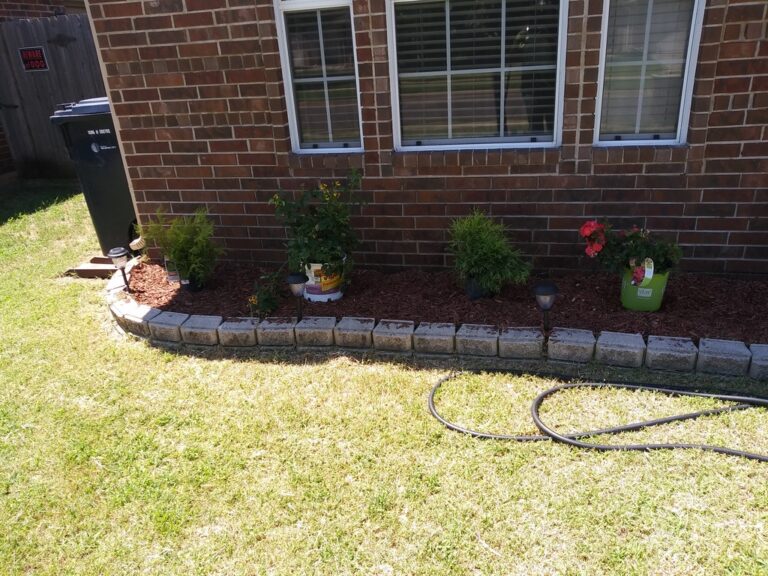
As summer fades, it’s the perfect time for Oklahoma City homeowners to prepare their lawns for the colder months. Fall lawn care isn’t just about raking leaves—it’s about strengthening your grass so it survives winter and thrives in spring. With a few key strategies, you can enjoy a healthier, greener lawn when the temperatures rise again.
In this blog, we’ll explore the most effective fall lawn care tips to help you protect your lawn, improve soil health, and ensure long-lasting curb appeal. Let’s get started!
Why Fall Lawn Care Matters
Taking care of your lawn in the fall helps it recover from summer stress and prepares it for dormancy. These small efforts pay off with thick, lush grass in spring. Skipping fall maintenance can lead to patchy, weed-filled lawns that are difficult to fix later.
Best Fall Lawn Care Tips for Oklahoma City
1. Gradually Lower Your Mowing Height
As autumn progresses, gradually reduce your mower height. Start by mowing at your regular height, then decrease it slightly each week. Eventually, cut your grass to about 2.5–3 inches before winter sets in.
➡ Why it matters: This prevents the grass from matting under snow while keeping the roots protected. However, don’t scalp it—cutting too low can damage the root system.
2. Rake Leaves Frequently
Without a doubt, fallen leaves are one of the biggest enemies of healthy grass in the fall. When left on your lawn, they block sunlight and trap moisture, creating a breeding ground for fungus and pests.
➡ Tip: Rake regularly or use a mulching mower to shred the leaves into small pieces that decompose and feed your lawn naturally.
3. Aerate the Soil
Compacted soil blocks oxygen, water, and nutrients from reaching the grass roots. Fall is the ideal time to aerate because the cooler temperatures reduce stress on the lawn, and grass roots are actively growing.
➡ How to do it: Use a core aerator to pull small plugs of soil from the lawn. This allows nutrients and moisture to reach deeper into the root zone.
4. Apply a Fall Fertilizer
Next, give your lawn the food it needs to grow strong roots before winter. Use a fall fertilizer rich in nitrogen and potassium to encourage deep root development.
➡ Timing is key: Apply in late September or early October, before the ground freezes. This prepares the grass for dormancy and gives it a head start in spring.
5. Overseed Bare or Thin Spots
If you notice patches where grass is thin or bare, fall is the best time to fix them. Overseeding during cooler months allows seeds to germinate without competition from weeds or heat stress.
➡ Pro tip: Rake the soil lightly, scatter quality grass seed suited for Oklahoma’s climate (like fescue or rye), and keep it consistently moist for a few weeks.
6. Water Deeply, But Less Frequently
Even though the weather is cooler, your lawn still needs water. Grass roots continue to grow in the fall, and moisture helps deliver nutrients more effectively.
➡ Watering strategy: Deeply water your lawn once a week until the first freeze. Water early in the morning to reduce evaporation and avoid fungal diseases.
7. Control Weeds Before They Spread
Don’t wait until spring to deal with weeds. Fall is a smart time to apply a post-emergent herbicide or pull weeds manually while the soil is soft and moist.
➡ Why this helps: Tackling weeds now prevents them from going dormant and returning stronger in spring. A weed-free lawn is easier to manage year-round.
8. Apply a Thin Layer of Compost
Topdressing your lawn with a thin layer of compost improves soil texture, adds nutrients, and promotes root growth—all without the need for chemical fertilizers.
➡ How much to use: Apply about ¼ inch of compost and rake it into the grass. Do this after aeration or overseeding for best results.
9. Edge Your Lawn and Garden Beds
Although it may seem cosmetic, edging your lawn creates clean borders and helps prevent grass from creeping into flower beds or walkways.
➡ Bonus: It also makes snow removal easier and prevents damage to nearby plants when using tools or machinery.
10. Drain and Winterize Your Irrigation System
Before freezing temperatures hit, drain your sprinkler or irrigation system. Leftover water in pipes can freeze and burst, causing costly damage.
➡ Steps to follow: Shut off the water supply, open all valves, and use compressed air to blow out the remaining water. Label shut-off valves for easy access in spring.
11. Clean and Store Lawn Equipment
Once you’ve finished your fall maintenance, take time to clean and properly store your tools. Leaving equipment dirty or exposed to the elements reduces its lifespan.
➡ Checklist: Empty gas from the mower, sharpen blades, clean filters, and store tools in a dry, sheltered area.
12. Avoid Foot Traffic on Frozen Grass
Finally, once frost arrives, limit walking across your lawn. Frozen blades of grass are brittle and can break under pressure, leading to dead patches and soil compaction.
➡ Tip: Mark high-traffic paths with stakes or temporary fencing to remind family and visitors to avoid them during winter.
Bonus: Winter Lawn Care Tips
Taking care of your lawn doesn’t stop with fall. Here are some winter lawn care tips to protect your investment:
-
- Avoid walking on frozen grass to prevent breakage.
-
- Keep the lawn clear of debris and snow piles.
-
- Apply a winterizer fertilizer if recommended for your grass type.
-
- Don’t forget to check gutters to prevent overflow that could drown or erode the lawn edges.
FAQs
Q1. When should I fertilize my lawn in Oklahoma City?
You should apply fall fertilizer between late September and early November. This gives your grass time to absorb nutrients before going dormant.
Q2. Can I mow my lawn after the first frost?
Yes, but mow cautiously and only if the grass is still growing. Do not mow when the grass is wet or frozen.
Q3. Is it necessary to water during fall?
Absolutely. Your lawn needs moisture to absorb nutrients and prepare for winter. Water weekly until the ground freezes.
Q4. What should I do with fallen leaves?
Mulch or compost them. Leaving thick piles of leaves on your lawn can cause disease and kill the grass underneath.
Q5. How can I prepare my lawn for snow?
Cut the grass shorter, remove debris, aerate, and apply fertilizer. Draining your irrigation system is also essential to avoid freeze damage.
Conclusion
Fall is your final chance to give your lawn the care it needs before winter. From fertilizing and aerating to seeding and topdressing, these fall lawn care tips are essential for homeowners in Oklahoma City. With a bit of effort now, you’ll enjoy a lush, green yard when spring returns.
Start now, and your lawn will thank you later.

